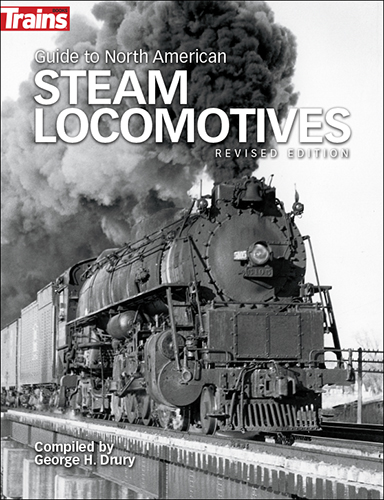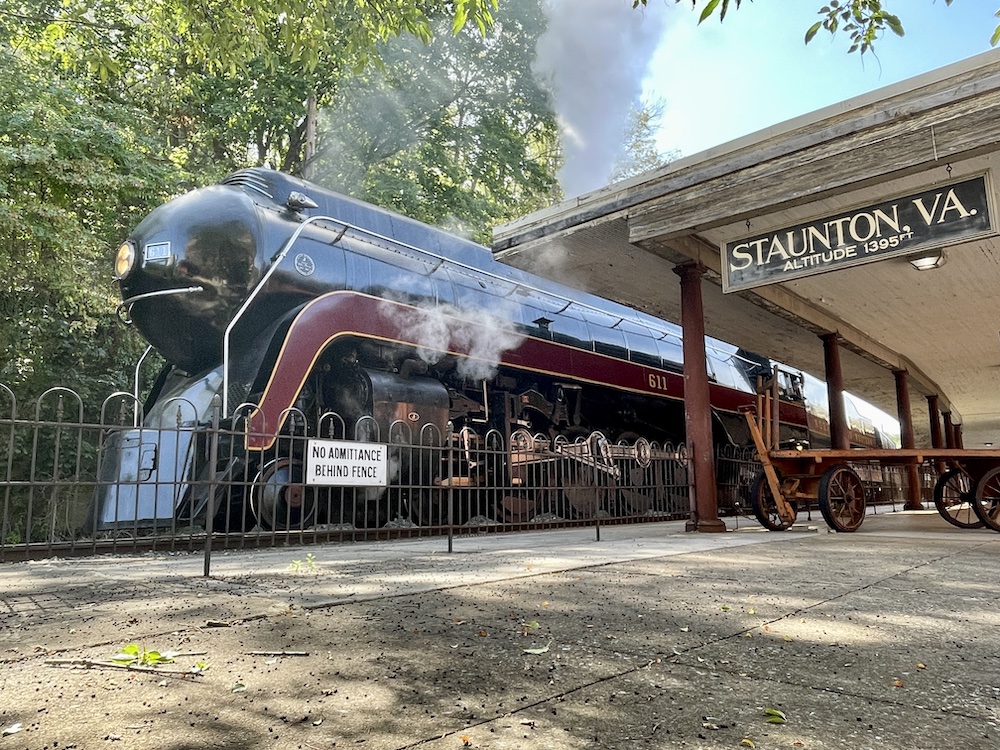By George H. Drury
Kalmbach Books; 336 pages, 420 photos; softcover, 8.25 x 10.75 inches; $24.99
www.kalmbachhobbystore.com
Six decades after the decline of steam in North America, Kalmbach has just issued a revised edition of the Guide to North American Steam Locomotives. A reference book on steam locomotives is an ambitious undertaking, and former Kalmbach librarian George H. Drury was well suited to compile it. This book’s timeframe is “from 1900 through the end of the steam era” although some 19th century developments are discussed as necessary to round out the narrative. It is an updated version of a book originally written by Drury in 1993, but this revised edition is in a vertical format instead of the original half-size horizontal.
The first fifty pages provide a general discussion of the North American steam locomotive, beginning with a helpful explanation on how the machines actually work. Then there is an explanation of various wheel arrangements and types, beginning with the different versions of “conventional” locomotives with tender and followed by a look at more unconventional locomotives, such as camelbacks, geared locomotives, steam turbines and tank engines. Regarding the latter, Drury correctly points out that “tank engines were rare in North America, and were mainly used in special situations,” however a reader unfamiliar with the history might find this surprising given the number of them active today. Their compact size and portability makes them uniquely suited for excursion service.
The next chapter examines the United States Railway Administration, the World War I era agency under which railroads were nationalized as part of the war effort. The USRA was responsible for a number of standardized locomotive designs, the most successful of which were 2-8-2s. USRA control of the railroads ended in 1920, but some if their designs, such as the 0-8-0 switcher, lived on, with 1,200 copies being produced after 1920. Despite USRA’s efforts, standardization didn’t really catch on until the diesel’s ascendance during the 1950s.
The major builders of steam locomotives, Alco, Baldwin, Canadian Locomotive, and Lima are all profiled in the following chapter. Alco was formed by the combination of 10 separate companies, each of which is briefly described in the Alco company profile. Also highlighted are two notable individuals, Samuel Vauclain and William Woodard of Lima, the latter responsible for Lima’s “Super Power” locomotives.
The remainder of the book covers steam engine development at major North American railroads individually. Starting with the Atchison, Topeka & Santa Fe and ending with Western Pacific, Drury assembles an amazing amount of information on each railroad’s locomotive fleet, including a roster and photos of significant types. It is at this point that the reader might want to have a copy of The Historical Guide to North American Railroads handy, because these two books compliment each other. For example, the latter volume’s railroad listings have maps, which can be helpful while reading that railroad’s narrative in Steam Locomotives. Additionally, throughout the book are suggestions for further reading on various topics, including references to various railroad-specific historical societies.
Most of the book’s photos are roster shots picked because they illustrate distinctive types operated by various railroads, but some nice action photos, such as one showing CB&Q 4-8-4 No. 5633, manage to provide a look at the machines in action. All of the photos in this book are black and white, not surprising considering the subject matter.
This revised edition of the Guide to North American Steam Locomotives is an essential reference work for anyone interested in motive power developments during the final six decades of the steam era. Kalmbach has done a fine job reformatting this book for the 21st century.















Does this book show the dates of retirement or the years that some steam engines were scrapped? I have seen that in some books like Lloyd Stagner’s books and Richard Prince’s material as well.
enjoyed the descriptions of all the locomotive types could not find a description of the big boy type
I'm glad to have a new copy, as I wore out my original edition. Some of the errors from the first edition remain (for instance, on page 35, Santa Fe is credited with the greatest number of 4-4-2s when PRR had at least 599), but the new, larger format is easier to read and understand.